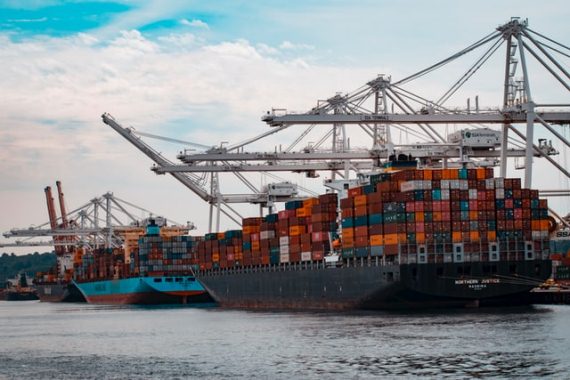-
Maritime trade contracted by 3.8% in 2020, reflecting an initial shock, but it rebounded later in the year and is projected to increase by 4.3% in 2021
-
Annual growth in maritime trade will slow to 2.4% between 2022 and 2026 compared to 2.9% over the past two decades
-
Supply chain bottlenecks have hindered economic recovery, as the rebound in trade has run into pandemic-induced logistical challenges
-
The report predicts a blend of reshoring, diversification, replication and regionalization, with China still likely to remain a leading manufacturing site.
The COVID-19 pandemic did not hurt maritime trade volumes as badly as expected, but it vividly exposed the glaring vulnerabilities already existing in the industry, according to a new United Nations (UN) report.
Maritime trade contracted by 3.8% in 2020, reflecting an initial shock, but it rebounded later in the year and is projected to increase by 4.3% in 2021, according to the UN Conference on Trade and Development’s (UNCTAD’s) Review of Maritime Transport 2021.
The report predicts that annual growth in maritime trade will slow to 2.4% between 2022 and 2026 compared to 2.9% over the past two decades.
The medium-term outlook for maritime trade remains positive but subject to “mounting risks and uncertainties,” it said.
Even as the industry slowly recovers, the report noted unprecedented pressures in global supply chains, dramatic spikes in freight rates, looming significant price rises for consumers and importers, and potential shifts in trade patterns due to trade tensions and the quest for more resilience.
UNCTAD said the pandemic exposed and magnified challenges that already existed in the maritime transport industry, notably labor shortages and infrastructure needs.
It raised concern over the continuing pandemic-induced crisis around crew changes, with lockdowns, border closures and lack of international flights leaving hundreds of thousands of seafarers stranded at sea, unable to be replaced or repatriated.
The report said supply chain bottlenecks have hindered economic recovery, as the rebound in trade has run into pandemic-induced logistical challenges, including shortages of equipment and containers, less reliable services, congested ports and longer delays and dwell times.
Supply-side constraints in container shipping are also rocking maritime transport and trade. While orders for new ships declined by 16% in 2020, continuing a downward trend of previous years, in 2021 shipping companies responded to the capacity limitations with a surge of new orders.
Shipping lines have benefitted from soaring freight rates, the report noted, as surcharges, fees and rates temporarily hiked even further after the container ship Ever Given blocked the Suez Canal in March 2021.
Moreover, the pandemic has accelerated megatrends that could transform maritime transport in the longer term, the report stated.
It has catalyzed digitalization and automation, which should deliver efficiency and cost savings. However, the shipping industry is also coming to grips with climate adaptation and resilience, and the urgent need to decarbonize and find alternative fuels to reduce emissions, which will inevitably come at a cost, said UNCTAD.
“By exposing the vulnerabilities of existing supply chains, the COVID-19 disruption has sharpened the need to build resilience and revived the debate over globalization and the supply chains of the future,” said Shamika N. Sirimanne, UNCTAD’s director of technology and logistics.
On concerns over increased reshoring and nearshoring, the report pointed out that it may be practical to reshore labor-intensive and low-value production, but it’s more complex to move production and switch suppliers for mid- and high-value-added manufacturing.
The report predicts a blend of reshoring, diversification, replication and regionalization, with China still likely to remain a leading manufacturing site. “Hybrid” operating models involving just-in-time and just-in-case supply chain models are likely to emerge. These adjustments could lead to a demand for more flexible shipping services, with implications for vessel types and sizes, ports of call and distances travelled.
Meanwhile e-commerce, accelerated by the pandemic, has transformed consumer shopping habits and spending patterns and driven the demand for distribution facilities and warehousing that are digitally enabled and offer value-added services. This could generate new business opportunities for shipping and ports.
Looking ahead, UNCTAD said global socioeconomic recovery will depend on smart, resilient and sustainable maritime transport and a broad-based worldwide vaccination effort, with developing countries having fairer access to vaccines.
“A lasting recovery will depend on the path of the pandemic and largely hinges on being able to mitigate the headwinds and on a worldwide vaccine roll-out,” said UNCTAD secretary-general Rebeca Grynspan.





